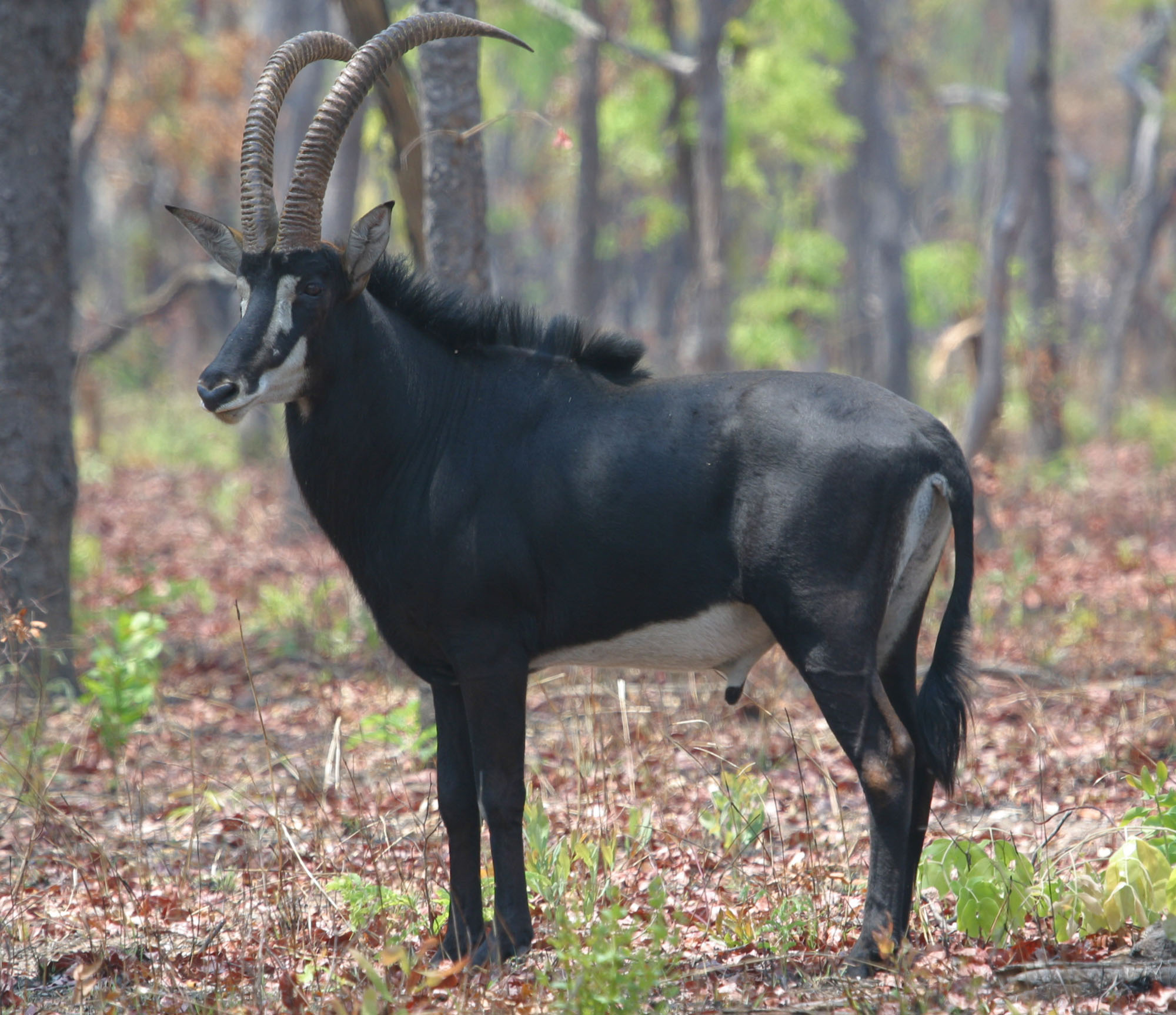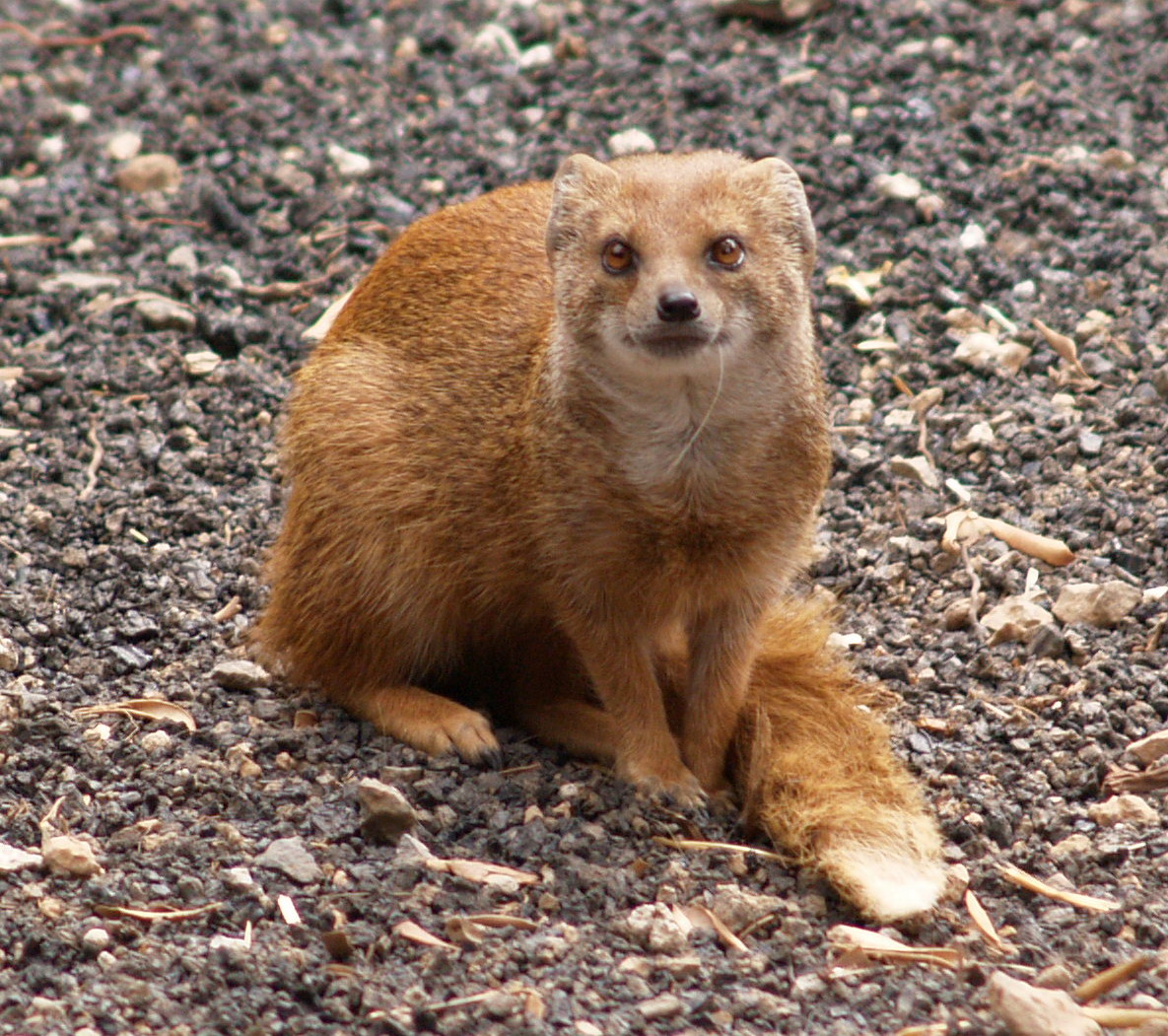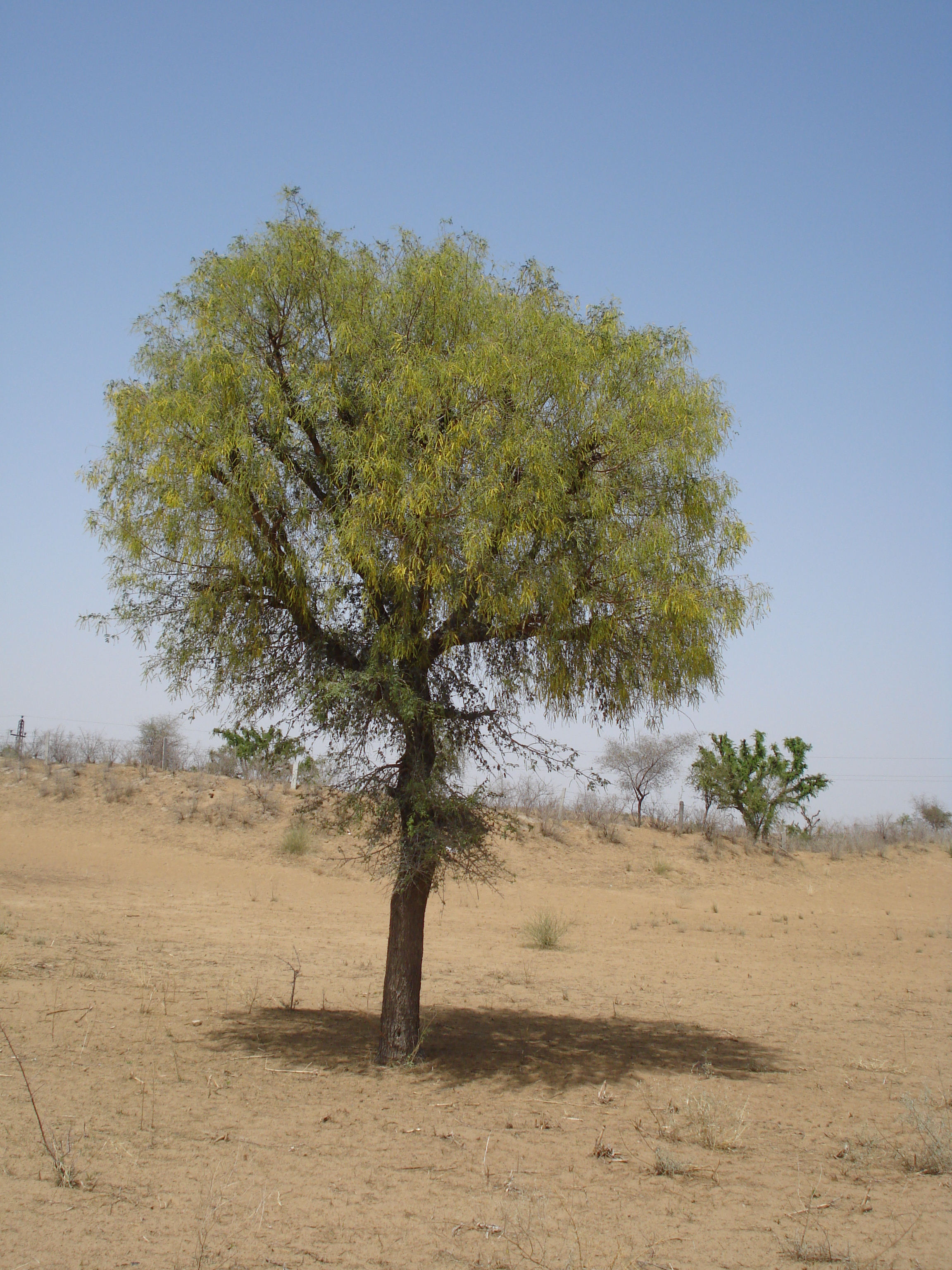|
Bassi (sanctuary)
Bassi Wildlife Sanctuary is a wildlife sanctuary near Bassi in Chittorgarh district of Rajasthan, India, 5 kilometres from the Bassi Fort Palace. It covers an area of 15,290 hectares and was established in 1988. The sanctuary is located on the western border of the Vindhyachal Ranges and includes the Bassi and Orai dam are part of the sanctuary. Antelope, wild boar, panther, mongoose and migratory birds inhabit the sanctuary. Animals found at the Bassi Wildlife Sanctuary: * Jackal * Crocodile * Crane * Wild cat * Civet * Chinkara * Panther * Spotted deer (Chital) * Peacock * Porcupine * Hyena * Langoor * Fox * Blue bull * Wild Boar * Eagle * Hare * Ghoda wild horse Bassi Wildlife Sanctuary is also attractive to many migratory birds that can be found here throughout the year. The forest is mostly dry and deciduous, the trees that are most represented are Dhok, Churel, Butea, and there is a large amount of medicinal herbs and flowers. See also * Arid Forest Research Institute ... [...More Info...] [...Related Items...] OR: [Wikipedia] [Google] [Baidu] |
India
India, officially the Republic of India ( Hindi: ), is a country in South Asia. It is the seventh-largest country by area, the second-most populous country, and the most populous democracy in the world. Bounded by the Indian Ocean on the south, the Arabian Sea on the southwest, and the Bay of Bengal on the southeast, it shares land borders with Pakistan to the west; China, Nepal, and Bhutan to the north; and Bangladesh and Myanmar to the east. In the Indian Ocean, India is in the vicinity of Sri Lanka and the Maldives; its Andaman and Nicobar Islands share a maritime border with Thailand, Myanmar, and Indonesia. Modern humans arrived on the Indian subcontinent from Africa no later than 55,000 years ago., "Y-Chromosome and Mt-DNA data support the colonization of South Asia by modern humans originating in Africa. ... Coalescence dates for most non-European populations average to between 73–55 ka.", "Modern human beings—''Homo sapiens''—originated in Africa. Th ... [...More Info...] [...Related Items...] OR: [Wikipedia] [Google] [Baidu] |
Chittorgarh District
Chittorgarh district is one of the 33 districts of Rajasthan state in western India. The historic city of Chittaurgarh is the administrative headquarters of the district. The district was established on 1 August 1948 by integrating portions of various princely states: Mewar, Pratabgarh, Tonk, and Jhalawar. Chittaurgarh is famous for the Chittor fort, home to various famous Rajput dynasties. Economy In 2006 the Ministry of Panchayati Raj named Chittorgarh one of the country's 250 most backward districts (out of a total of 640). It is one of the twelve districts in Rajasthan currently receiving funds from the Backward Regions Grant Fund Programme (BRGF). Demographics According to the 2011 census Chittorgarh district has a population of 1,544,338, roughly equal to the nation of Gabon or the US state of Hawaii. This gives it a ranking of 323rd in India (out of a total of 640). The district has a population density of . Its population growth rate over the decade 2001-2011 ... [...More Info...] [...Related Items...] OR: [Wikipedia] [Google] [Baidu] |
Rajasthan
Rajasthan (; lit. 'Land of Kings') is a state in northern India. It covers or 10.4 per cent of India's total geographical area. It is the largest Indian state by area and the seventh largest by population. It is on India's northwestern side, where it comprises most of the wide and inhospitable Thar Desert (also known as the Great Indian Desert) and shares a border with the Pakistani provinces of Punjab to the northwest and Sindh to the west, along the Sutlej- Indus River valley. It is bordered by five other Indian states: Punjab to the north; Haryana and Uttar Pradesh to the northeast; Madhya Pradesh to the southeast; and Gujarat to the southwest. Its geographical location is 23.3 to 30.12 North latitude and 69.30 to 78.17 East longitude, with the Tropic of Cancer passing through its southernmost tip. Its major features include the ruins of the Indus Valley civilisation at Kalibangan and Balathal, the Dilwara Temples, a Jain pilgrimage site at Rajasthan's only hi ... [...More Info...] [...Related Items...] OR: [Wikipedia] [Google] [Baidu] |
Bassi, India
Bassi is a sub-division of Jaipur district in the state of Rajasthan. It is approximately 30 km from Jaipur city which is now considered a part of the main city. The sub-district had a population of 229,639 (2001 census) spread over 210 villages. Bassi is a town and situated on NH 21. About 27 km from Dausa. Bassi is also a legislative assembly Assembly may refer to: Organisations and meetings * Deliberative assembly, a gathering of members who use parliamentary procedure for making decisions * General assembly, an official meeting of the members of an organization or of their representa ... of Rajasthan and current MLA of Bassi is Laxman Meena. The population of bassi town is approximately 45000. Bassi is a "Nagarpalika" declared by Govt. of Rajasthan in 2020. List of villages Places of interest References Jaipur district {{Rajasthan-geo-stub ... [...More Info...] [...Related Items...] OR: [Wikipedia] [Google] [Baidu] |
Bassi Fort Palace , an earthry dam in Chittorgarh
{{disambiguation, geo ...
Bassi may refer to: People *Bassi Maestro (born 1973) (also known simply as Bassi), Italian rapper, deejay, beatmaker * Bassi (surname) Places * Bassi Falls, a waterfall in the Sierra Nevada in California * Bassi Department, a department or commune of Burkina Faso * Bassi, India, a settlement in Rajasthan * Bassi, Bhulath, India, a village in Bhulath tehsil, Kapurthala district, Punjab state, India * Bassi (sanctuary), a wildlife sanctuary in India * Bassi dam Bassi may refer to: People *Bassi Maestro (born 1973) (also known simply as Bassi), Italian rapper, deejay, beatmaker * Bassi (surname) Places * Bassi Falls, a waterfall in the Sierra Nevada in California * Bassi Department, a department or commun ... [...More Info...] [...Related Items...] OR: [Wikipedia] [Google] [Baidu] |
Antelope
The term antelope is used to refer to many species of even-toed ruminant that are indigenous to various regions in Africa and Eurasia. Antelope comprise a wastebasket taxon defined as any of numerous Old World grazing and browsing hoofed mammals belonging to the family Bovidae of the order Artiodactyla. A stricter definition, also known as the "true antelopes," includes only the genera '' Gazella'', '' Nanger'', '' Eudorcas'' and '' Antilope''. One North American species, the pronghorn, is colloquially referred to as the "American antelope," but it belongs to a different family from the African and Eurasian antelopes. A group of antelope is called a herd. Unlike deer antlers, which are shed and grown annually, antelope horns grow continuously. Etymology The English word "antelope" first appeared in 1417 and is derived from the Old French ''antelop'', itself derived from Medieval Latin ''ant(h)alopus'', which in turn comes from the Byzantine Greek word ἀνθόλοψ ... [...More Info...] [...Related Items...] OR: [Wikipedia] [Google] [Baidu] |
Wild Boar
The wild boar (''Sus scrofa''), also known as the wild swine, common wild pig, Eurasian wild pig, or simply wild pig, is a suid native to much of Eurasia and North Africa, and has been introduced to the Americas and Oceania. The species is now one of the widest-ranging mammals in the world, as well as the most widespread suiform. It has been assessed as least concern on the IUCN Red List due to its wide range, high numbers, and adaptability to a diversity of habitats. It has become an invasive species in part of its introduced range. Wild boars probably originated in Southeast Asia during the Early Pleistocene and outcompeted other suid species as they spread throughout the Old World. , up to 16 subspecies are recognized, which are divided into four regional groupings based on skull height and lacrimal bone length. The species lives in matriarchal societies consisting of interrelated females and their young (both male and female). Fully grown males are usually solita ... [...More Info...] [...Related Items...] OR: [Wikipedia] [Google] [Baidu] |
Panthera
''Panthera'' is a genus within the family Felidae that was named and described by Lorenz Oken in 1816 who placed all the spotted cats in this group. Reginald Innes Pocock revised the classification of this genus in 1916 as comprising the tiger (''P. tigris''), lion (''P. leo''), jaguar (''P. onca''), and leopard (''P. pardus'') on the basis of common cranial features. Results of genetic analysis indicate that the snow leopard (formerly ''Uncia uncia'') also belongs to the genus ''Panthera'' (''P. uncia''), a classification that was accepted by IUCN Red List assessors in 2008. The tiger, lion, jaguar and leopard are the only cat species with anatomical structures that enable them to roar; the snow leopard cannot. The primary reason for this was formerly assumed to be the incomplete ossification of the hyoid bone. However, new studies show the ability to roar is due to other morphological features, especially of the larynx. Etymology The word ''panther'' derives from classical ... [...More Info...] [...Related Items...] OR: [Wikipedia] [Google] [Baidu] |
Mongoose
A mongoose is a small terrestrial carnivorous mammal belonging to the family Herpestidae. This family is currently split into two subfamilies, the Herpestinae and the Mungotinae. The Herpestinae comprises 23 living species that are native to southern Europe, Africa and Asia, whereas the Mungotinae comprises 11 species native to Africa. The Herpestidae originated about in the Early Miocene and genetically diverged into two main genetic lineages between 19.1 and . Etymology The English word "mongoose" used to be spelled "mungoose" in the 18th and 19th centuries. The name is derived from names used in India for ''Herpestes'' species: or in classical Hindi; in Marathi; in Telugu; , and in Kannada. The form of the English name (since 1698) was altered to its "-goose" ending by folk etymology. The plural form is "mongooses". Characteristics Mongooses have long faces and bodies, small, rounded ears, short legs, and long, tapering tails. Most are brindled or grizzly; a few ... [...More Info...] [...Related Items...] OR: [Wikipedia] [Google] [Baidu] |
Arid Forest Research Institute
Arid Forest Research Institute (AFRI) is a research institute situated in Jodhpur, Rajasthan, India. The institute conducts scientific research in forestry in order to provide technologies to increase the vegetative cover and to conserve biodiversity in the hot arid and semi-arid regions of Rajasthan and Gujarat. It operates under the Indian Council of Forestry Research and Education (ICFRE) of the Ministry of Environment and Forests, Government of India. About The Arid Forest Research Institute was established in 1988 to cater the forestry research needs of the arid and semi-arid region of Rajasthan, Gujarat, Dadra and Nagar Haveli, and Daman-Diu. The institute is situated on Jodhpur Pali Road (NH 65) in a campus spreading over 66 hectares, housing office buildings, laboratories, a library-cum-information center, community center, guest house, scientist hostel and residential quarters. The institute has an additional campus at Plot No. 729 adjoining CAZRI. The institute ... [...More Info...] [...Related Items...] OR: [Wikipedia] [Google] [Baidu] |
Wildlife Sanctuaries In Rajasthan
Wildlife refers to undomesticated animal species, but has come to include all organisms that grow or live wild in an area without being introduced by humans. Wildlife was also synonymous to game: those birds and mammals that were hunted for sport. Wildlife can be found in all ecosystems. Deserts, plains, grasslands, woodlands, forests, and other areas, including the most developed urban areas, all have distinct forms of wildlife. While the term in popular culture usually refers to animals that are untouched by human factors, most scientists agree that much wildlife is affected by human activities. Some wildlife threaten human safety, health, property, and quality of life. However, many wild animals, even the dangerous ones, have value to human beings. This value might be economic, educational, or emotional in nature. Humans have historically tended to separate civilization from wildlife in a number of ways, including the legal, social, and moral senses. Some animals, howe ... [...More Info...] [...Related Items...] OR: [Wikipedia] [Google] [Baidu] |
Protected Areas Established In 1988
Protection is any measure taken to guard a thing against damage caused by outside forces. Protection can be provided to physical objects, including organisms, to systems, and to intangible things like civil and political rights. Although the mechanisms for providing protection vary widely, the basic meaning of the term remains the same. This is illustrated by an explanation found in a manual on electrical wiring: Some kind of protection is a characteristic of all life, as living things have evolved at least some protective mechanisms to counter damaging environmental phenomena, such as ultraviolet light. Biological membranes such as bark on trees and skin on animals offer protection from various threats, with skin playing a key role in protecting organisms against pathogens and excessive water loss. Additional structures like scales and hair offer further protection from the elements and from predators, with some animals having features such as spines or camouflage servi ... [...More Info...] [...Related Items...] OR: [Wikipedia] [Google] [Baidu] |


_(cropped).jpg)


.jpg)
